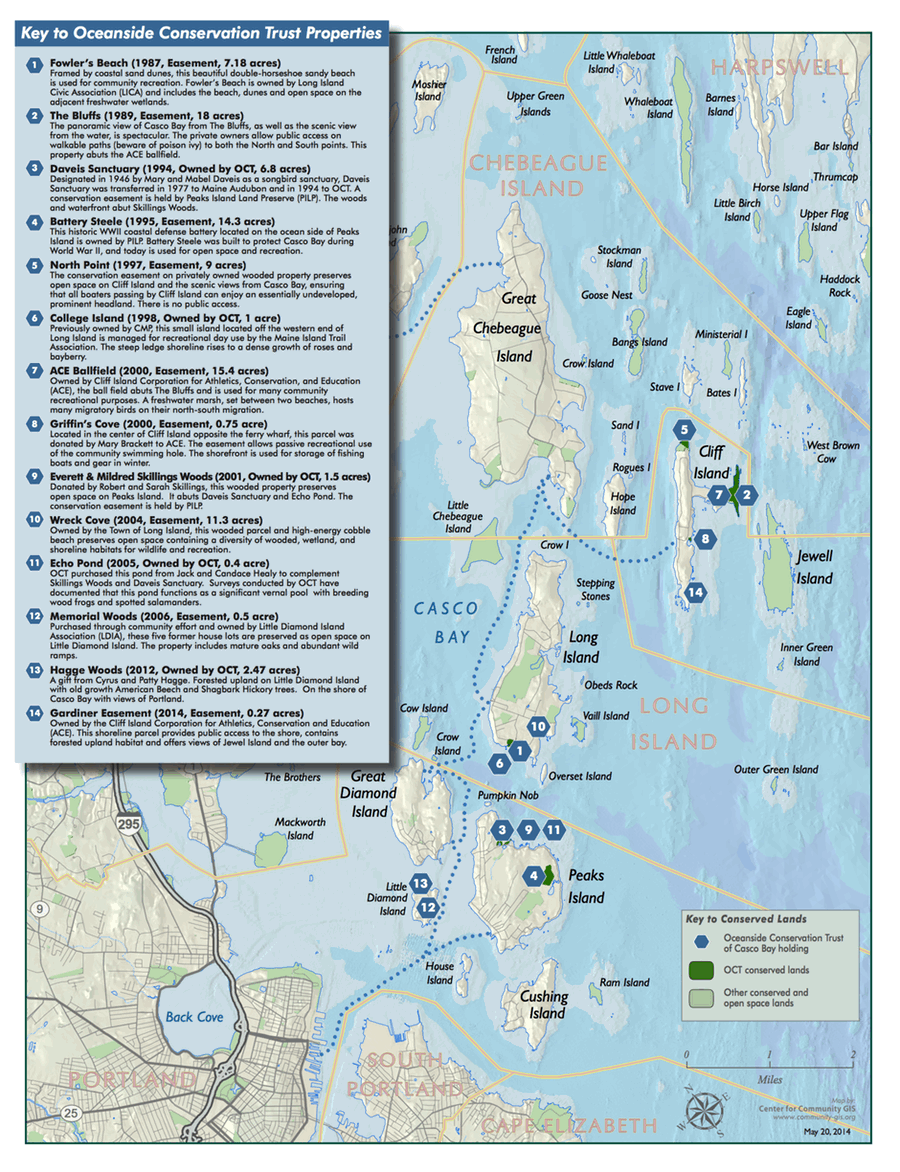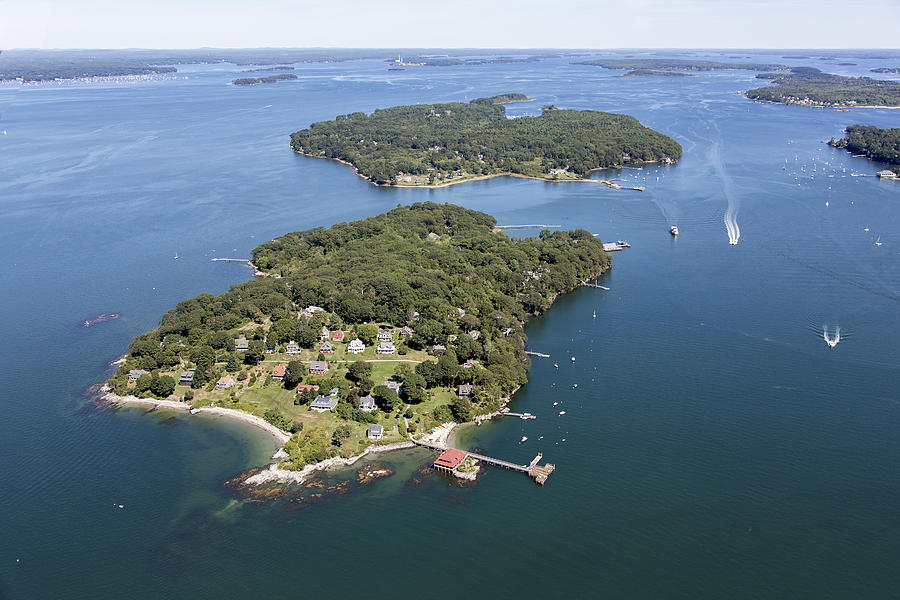Outlook explores variables that shape and influence individuals relationships with nature and how they seek to inspire, adapt and reimagine what conservation can look like moving forward in a world where Climate Change is affecting a broad range of human and natural systems.
Author: Chas Van Damme, SMCC Summer Associate. A rising senior at Bates College studying Environmental Studies with a focus in Global Environmental Politics.
OUTLOOK: An afternoon chat with Bill Stauffer, Vice President of Oceanside Conservation Trust of Casco Bay.
I had the opportunity to sit and chat with Bill Stauffer, Vice President of the Oceanside Conservation Trust of Casco Bay (OCT). As a Colby College alum and one of the lucky few full-time residents on Little Diamond Island, Bill’s roots stretch far and wide throughout the state of Maine – roots that evidently keep him motivated in the effort to protect the landscapes he has known and loved for decades.

As we spoke, Bill recounted the significant changes he had witnessed in the world of conservation throughout his time with OCT. Roughly twenty years ago, he remembers the amount of conserved land on Little Diamond Island being about an acre. Zoom ahead to today, and nearly 20% of the island is conserved in perpetuity thanks in large part to the hard work and generosity of the OCT community. But that’s just a snapshot. OCT conserves around a 100 acres of extraordinarily important island properties (fee & easements) across several islands in the Casco Bay.
Prized for their importance to migratory birds, various other flora and fauna, as well as their beauty, islands are vital aspects of our ecosystems. Every acre of conserved island land counts. Bill noted the importance of islands as hotspots for climate change research. Due to their geographical separation from mainland territories, islands are often characterized as “natural” spaces”, making them key areas for ecological research focusing on the impacts of human development. OCT is actively monitoring and documenting coastal impacts from climate change on their properties, and is one of many land trusts involved with the Climate Change Observatory Network. OCT has four Climate Change Observatory sites installed on island properties, that encourage and inspire community members and visitors to help monitor, learn, and get involved in climate action.
- CCO at Hagge Woods on Little Diamond Island
- CCO at Fowler’s Beach on Long Island
- CCO at Ace Ball Field Sou’west Beach on Cliff Island
- CCO on a landowner property on Great Diamond Island
- and plans for another site on Peaks Island.

In addition to these sites, OCT’s active all volunteer board and stewards are on the ground every year to monitor all of their properties, keeping a keen eye on how the landscapes have changed over time. After their monitoring period this May, Bill mentioned that erosion continues to be a key issue at hand on just about all of OCT’s properties. Ironically, erosion is even threatening the viability of one of the climate change observatory posts they set up a little while back.
“We have witnessed intensified storm surges that erode the banks more every year,” Bill recounted.
Not only is this proving to be a threat to the sensitive ecosystems on the islands, but it is also impacting local residents. In fact, Bill noted that property insurance costs on the island are nearly triple the price one would pay on the mainland. Of course, the cost one might pay depends on several variables, but on average, island residents are paying massive premiums that are only expected to get pricier as climate change intensifies.
Climate change is becoming a burden on our wallets as much as our safety, but let’s not get lost in the thinking that being environmentally friendly comes at a hefty cost. Bill and I both agreed that it does not always have to be. His family, for instance, installed solar panels on their home several years ago, allowing them to generate a large chunk of clean electricity on their own. This change paid off the price of solar panel installation in only a couple of years, allowing them to create energy for free without any reliance on the grid. In fact, with most home installations, folks are able to sell back any excess electricity back to the grid to be shared throughout their community. Pair these installations with electric vehicles and one could also cut out a reliance on high fuel costs. You pay high up-front costs for renewable energy, and that is a major financial barrier of access for many people, but state and federal tax deductions are available for folks to make these changes a little more economical. If you are interested in learning more about these deductions check out this link!
It was a pleasure to chat with such a charismatic person like Bill, and an even bigger privilege to hear about all the truly impactful work he is doing with OCT. Thanks, Bill!

